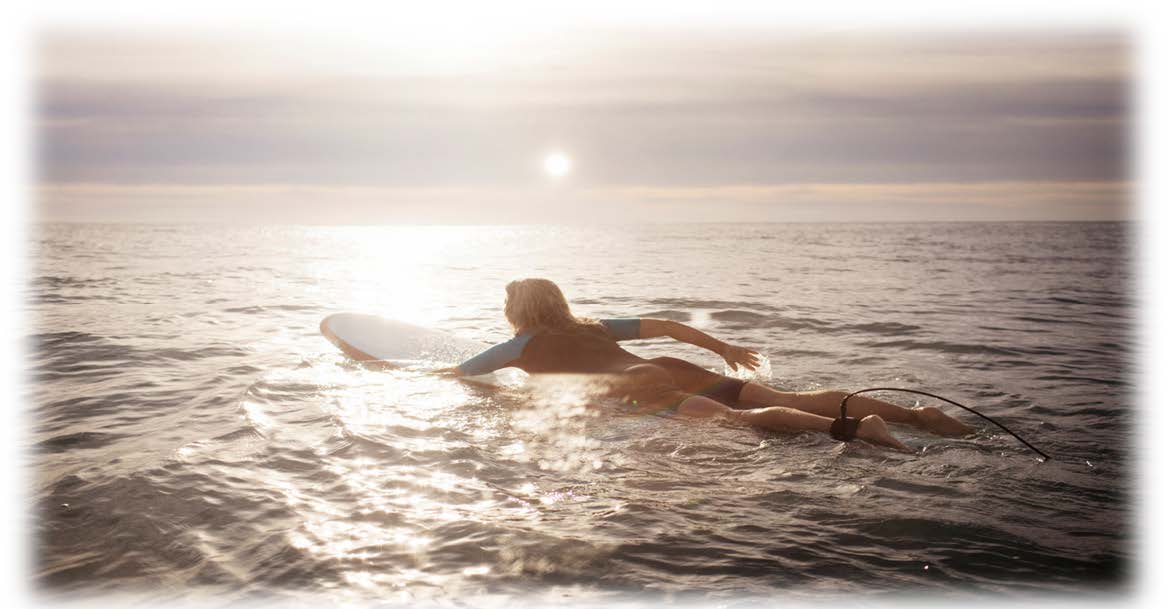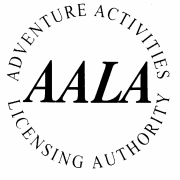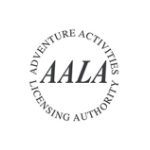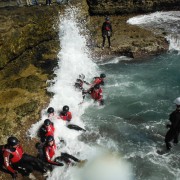Posts
Important message about changes to AALA
/in News/by Activities Industry MutualPlease find attached updated information on the changes to AALA from the 1st April 2020.
AALA-update-February-2020It details what is changing, the application process and site visits, more information will be available on the HSE website soon and questions should be sent to [email protected]
Adventure UK
/in News/by Activities Industry MutualApplications are invited for Chair of Adventure UK.
Adventure UK is representative of a wide range of stakeholders from the UK adventure activities sector. The body was formally known as the Adventure Activities Industry Advisory Council and has added to its membership the UK Adventure Industry Group to form the new body.
The aim of Adventure UK is to represent the Adventure Activities Sector in the UK in order to ensure that end users have a safe and professional adventurous experience. This is achieved by:
- Safety Accreditation: taking a coordinating role in safety accreditation of adventurous activity and managing, developing and growing Adventuremark through Adventure Activities Industry Advisory Committee (AAIAC).
- Representation: being a single consultative contact point for Government and other agencies in the areas of safety, risk management and good practice
- Guidance: being a point of contact for all stakeholders, sharing good practice, developing standards and guidance
- Development: of a non-statutory Industry Scheme to replace AALA Licensing through the Option 3 Working Group (O3WG)
Adventure UK is the body of representative organisations who oversee the election of AAIAC members and the O3WG its work plan.
Current representation:
Adventure Industry Northern Ireland
Association of Heads of Outdoor Education Centres
British Activity Providers Association
British Cycling
Council for Learning Outside the Classroom
European Ropes Course Association
Expedition Providers Association
Institute for Outdoor Learning
Mountain Training
Outdoor Council
Outdoor Education Advisers’ Panel
Scottish Adventure Activity Forum
Scottish Advisory Panel for Outdoor Education
Sport and Recreation Alliance
Sport Wales
Wales Activity Tourism Organisation
Young Explorers’ Trust
Together with 4 Observers and Advisors
A full role description and person specification is given in the application pack, which is available from http://bit.ly/AdventureUKPost
Applications, together with two statements of support, must be returned by midday on Monday 14 October 2019 to from [email protected]
AIM Surveys Members – AALA Licensing
/in News/by Activities Industry MutualAALA Licensing Member Survey
The HSE has been reviewing the AALA licensing regulations to consider the future of these and the form and scope of the regulations going forward. They have now produced three options for the future. These are:-
- Option 1 – Retain the AALA regulations and current licensing scheme underpinned by the Health and Safety at Work etc. Act 1974, and increase fees
- Option 2 – Retain the AALA regulations and current licensing scheme underpinned by the Health and Safety at Work etc. Act 1974, extend the activities in-scope and increase fees.
- Option 3 – Removal of the AALA regulations and move to an industry-led; not-for-profit accreditation scheme underpinned by the Health and Safety at Work etc. Act 1974, to provide assurance to users of outdoor activities
All interested parties are requested to respond to the HSE survey and the deadline date for the response is the 9th March.
AIM wishes to gauge its Members’ views in advance of this deadline date and has emailed all members requesting they complete a survey so we can assess these views.
Please check your inboxes for this email and click the link within to commence the survey. Please will you complete the survey by the 21st February so we can review the results in advance of the deadline.
As directly involved in the industry we strongly encourage you to respond to the HSE direct as well using the link here.
http://www.hse.gov.uk/consult/condocs/cd286.htm
The HSE have advised that after the discussion document is closed, the responses to the questions will be analysed. They will engage further with stakeholders to further develop the preferred option.
How much are you prepared to risk when it comes to Liability Cover?
/in News/by Activities Industry MutualAnother Liability Claim Successfully Defended
/in News/by Activities Industry MutualAnother liability claim successfully defended – but not without legal costs
This claim for damages arose from an accident which occurred during a coasteering activity on the Abereiddy Beach on the Pembrokeshire coast on 13 September 2008. The group members were invited to slide down a smooth two metre slab of rock, and it appeared that the claimant landed awkwardly and caught her foot on a projecting piece of rock at the foot of the slide, fracturing her right ankle in a shallow rock pool. Following a complaint by the injured party to the Licensing Authority on the appropriateness of the slide where she broke her ankle, the handling of the accident by the instructor and the after-incident care, an AALA complaint investigation inspection took place on 14th November. The report concluded that, whilst acknowledging that the 1-to-10 ratio had been exceeded (it was 1 to 12), the slab looked innocuous enough and the others in the group had completed the slide without incident, and that the immediate first aid and summoning of help was carried out adequately.
However, the claimant’s solicitors, MWR Solicitors of Preston, couldn’t wait for the AALA report and issued a letter of claim on 2nd December 2008 alleging that, inter alia, the provider exposed their client to a foreseeable risk of injury and failed to provide an experienced instructor. And they continued to press their case subsequent to the AALA report.
The wheels of justice turn slowly and in this case very slowly. Proceedings were issued in September 2011, four days before the three year limitation (or deadline date) and served in January 2012, seven days inside the further four month extension deadline and the case finally made it to the Southend County Court for the hearing on the 6th and 7th February 2014, before being adjourned to 23rd May for the judge to consider further written submissions.
Eventually, five years and two hundred and sixty nine days after the accident, the Circuit Judge ruled that the claimant’s injury was “a true and unavoidable accident for which the defendant should not be found liable”, a judgment pretty much consistent with the conclusions of the original AALA Complaint Report of some five and a half years earlier.
Although, subsequent to the ruling, AIM was entitled to recover its full legal costs from the losing claimant, as ever recovery didn’t turn out to be straightforward. So, following the “bird in the hand” principle, we accepted their offer of part payment to close the account, unfortunately leaving AIM some £22,500 out of pocket.
As a post script, following the Jackson reforms (see AIM Newsletter 2013), introduced last year to curb legal costs, we, as defendants, have forfeited our ability to recover any of our costs from the losing claimant’s side. In exchange for that, the claimant’s solicitors are no longer able to double their charges as “success” fees and bill us, and are no longer able to recover the cost of their ATE (after the event) insurance which covers their costs in the event that they lose.
Reflections on the Assessment and Management of Risk
/in News/by Activities Industry MutualBy David Ball and Laurence Ball
We are fortunate in being able to devote some of our work time to things in which we enjoy participating, namely, adventure activities.
Consequently, over the last few years, we have had the rare luxury of being able to research the conduct of risk assessment and how it is applied and interpreted, not just in shops and factories, the finance sector, and the courts, but also adventure pursuits. This has identified a series of what we believe to be deep issues affecting a surprisingly broad swath of life beyond the conventional factory fence.
First, we would like to draw attention to continuing disconnects over the meaning of that, for us, crucial word – ‘risk.’ We define risk as the likelihood that some particular thing will happen as a result of exposure to some hazard. So, for instance, in the aftermath of some accident, the immediate question which springs to mind is ‘What was the prior risk of that event?’ leading to the follow-up question which is ‘Was that level of risk acceptable in the circumstances?’ Furthermore, we are not thinking here about the subjective risk (‘it looks dangerous’), but the objective risk (‘it might look dangerous but what is the reality?’).
Experiences in court, however, have shown that expert witnesses and enforcement agencies are not consistently applying this approach. Instead, the logic sometimes followed is what Professor Ragnar Löfstedt has called a hazard-based approach. Basically, this seeks to identify hazards and then to eliminate or control them. In contrast, a risk-based approach would identify hazards, assess the risk, and then decide what control is warranted in the circumstances. Which approach is correct? Mark Hoban, Minister for Employment, summarised the position in February 2013 when, in the context of the government’s reforms of health and safety including the Löfstedt review, he said:
“We need to implement the remaining measures in both reports as well as continue to identify areas where further reforms are needed to create a modern, simplified, risk-based framework for health and safety in Great Britain”*
We take it as unassailable that the risk-based approach is fundamental to the national risk control philosophy. It is, after all, enshrined in the requirement of the Health and Safety at Work etc. Act to do what is reasonable practicable.
Second, assessing risk of some hazardous activity is, contrary to advice often given, not easy. As Professor John Adams has said, “It’s not rocket science. It’s much harder.” We agree, and recent research supports this contention. Risk assessors, especially when parachuted in from some external setting, find it very difficult to quantify consistently the risk of harm from activities and situations. The primary means of quantifying risk include use of accident statistics (if they exist) and personal experience through immersion in the sector of interest. Thus, if you are an outsider, you will be in a weak position to assess risk. This is one of the reasons why AALA was held in such high regard. As initially set up, it was staffed by sector experts who had been immersed in the industry throughout their lives and had contributory expertise. The danger was, when AALA was subsumed by the HSE, that a hazard-based factory culture of risk control would take over which was also comparatively uninformed about actual risk levels and more driven by perception. If your experience derives from shopping malls and office environments, the natural world can appear an horrendously dangerous place.
Third, we have observed a tendency in litigious settings for the prosecution, and their experts, to demand evidence of proper governance and appropriate management systems. The question, seldom asked, is ‘What is proper governance and a proper management system in the circumstances?’ You don’t need to be an expert in management to know that there are different management styles and one size does not best fit all circumstances. Over the decades, health and safety has developed an increasingly autocratic, command-and-control structure with numerous written protocols to be followed. While this may work in some situations the downside is that it shifts responsibility away from front-line professionals. We think that what is most effective in managing the safety of adventure participation is the training and experience of leaders who need more autonomy than might be expected of a factory environment.
These thoughts lead us to a number of considerations:
- it appears imperative to us that any new and future regulatory body for adventure activities be populated by persons with contributory expertise and thus drawn from the adventure sector
- that a risk-based philosophy must be pursued
- that it should not be pretended that risk assessment is easy (that’s one reason why you need in-house experts)
- that there is a fundamental difference between managing risk in factories and the natural environment, the latter being undertaken in order to realise benefits** and which implies the need to trade-off risk of injury against gains in things like health, enjoyment etc.
- in seeking support or advice via external agencies it is important to ensure that they have the relevant insight into your sector
David Ball is professor of Risk Management & Director of the Centre for Risk Management at Middlesex University and has some 30 years experience in the fields of risk and public safety. Laurence Ball has a degree in economics and politics and a masters in risk management and is currently working on financial risk but with strong interest in safety and health in public settings. We’d recommend their recent book, Public Safety & Risk Assessment, Improving Decision Making as an excellent read for activities providers.
* View the February 2013 health and safety reforms progress report here
** See article by James Willis, On Target, Autumn 2012.
About Us
AIM was established in 2005 in response to growing demand within the sector for a cost-effective alternative to traditional insurance cover.MORE ABOUT US
Latest News
 Incident Check List – HCR Law17th April 2024 - 2:50 pm
Incident Check List – HCR Law17th April 2024 - 2:50 pm Electric Bike Theft27th March 2024 - 7:02 pm
Electric Bike Theft27th March 2024 - 7:02 pm Surf case ruling finds in favour of activity provider5th March 2024 - 2:26 pm
Surf case ruling finds in favour of activity provider5th March 2024 - 2:26 pm
Covid-19 Updates
 COVID 19 Update – NYA – Managing youth sector activities and spaces24th June 2021 - 2:40 pm
COVID 19 Update – NYA – Managing youth sector activities and spaces24th June 2021 - 2:40 pm
Activities Industry Mutual
90 Fenchurch Street,
London
EC3M 4ST







